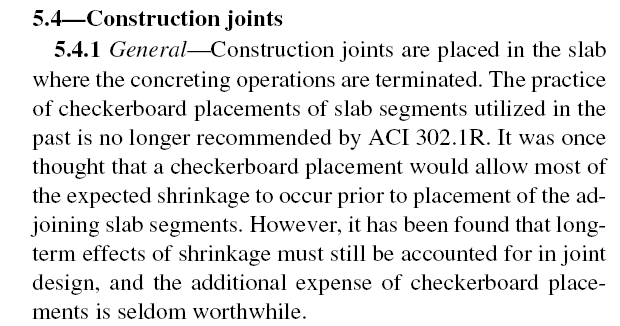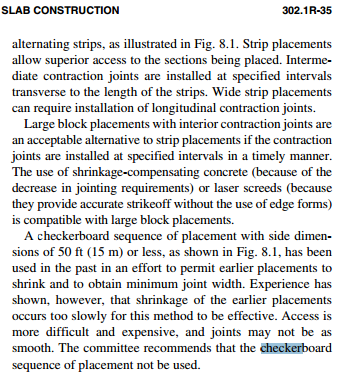I've got a client that wants to omit the diamond buck outs that we typically place in the slab on grade at columns to reduce unsightly slab cracking. They don't want to have to do a second pour. I've warned the client that there will be an increased risk of unsightly cracking and it seems that they're okay with that:
Questions:
1) Are there any truly structural implications? Will the bottoms of my columns get sheared off from their foundations?
2) Anyone have a sense for how bad the cracking could potentially be and the risk of it occurring?
3) Any ideas for one pour solutions that wouldn't add a lot of cost? Larger compressible joints? Low shrinkage concrete?
I like to debate structural engineering theory -- a lot. If I challenge you on something, know that I'm doing so because I respect your opinion enough to either change it or adopt it.
Questions:
1) Are there any truly structural implications? Will the bottoms of my columns get sheared off from their foundations?
2) Anyone have a sense for how bad the cracking could potentially be and the risk of it occurring?
3) Any ideas for one pour solutions that wouldn't add a lot of cost? Larger compressible joints? Low shrinkage concrete?
I like to debate structural engineering theory -- a lot. If I challenge you on something, know that I'm doing so because I respect your opinion enough to either change it or adopt it.

![[idea] [idea] [idea]](/data/assets/smilies/idea.gif)
![[r2d2] [r2d2] [r2d2]](/data/assets/smilies/r2d2.gif)

